July 12-16, 2018
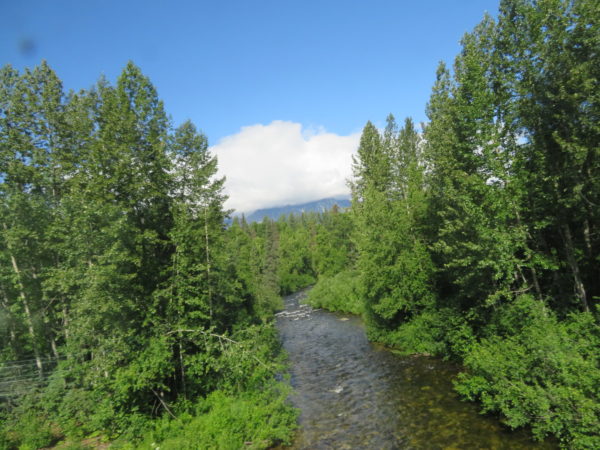
We crossed pretty Byers Creek on the way to Anchorage.
Anchorage is Alaska’s largest city and is located on the state’s south-central gulf coast. It sits at the head of the Cook Inlet on a peninsula between the Turnagain Arm and Knik Arm, with the rugged Chugach Mountains forming a striking backdrop. More than half the state’s population lives in Anchorage and the neighboring Matanuska-Susitna (Mat-Su) borough.
Anchorage began on Ship Creek in 1915 as a staging ground for construction of a railroad to the interior. Today some 90% of the goods for Alaska pass through the Port of Anchorage. It also has some of the most extreme tides in the world averaging nearly 40 feet. Anchorage is within 9 hours by air of 90% of the industrial world, has become both a major refueling stop for international cargo and passenger flights and a major FedEx hub.
Trolley Tour
We started our exploration of Anchorage downtown at the Log Cabin Visitors Center and decided to take a trolley tour of the city. While waiting for the trolley we walked across the street to Alaska’s largest gift store which was packed with tons of stuff that we didn’t need. The Woolworth door handles were a blast from the past.
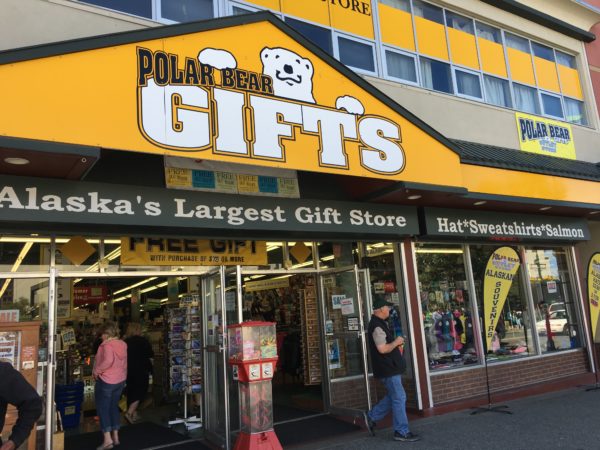
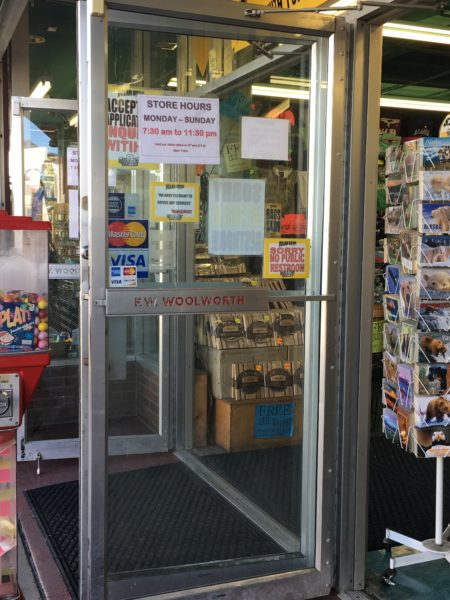
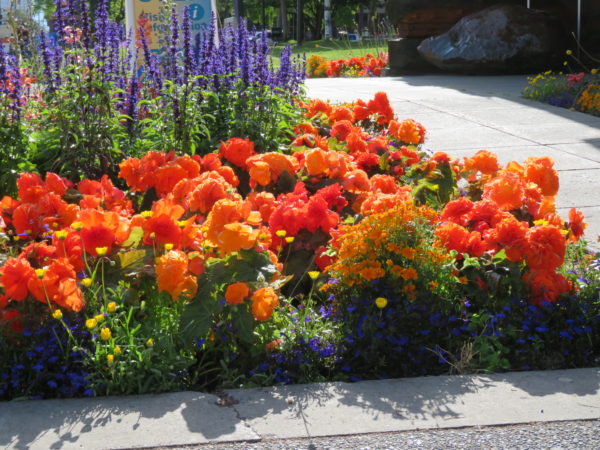
Beautiful flowers at the Visitors Center.
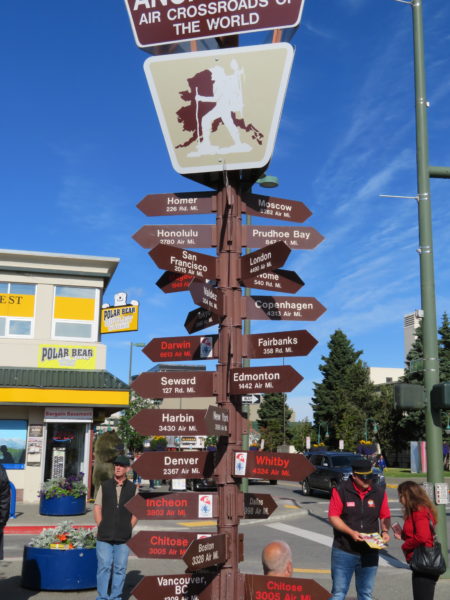
That’s Dave standing near the Denver signpost checking to see if he can see Russia from there.
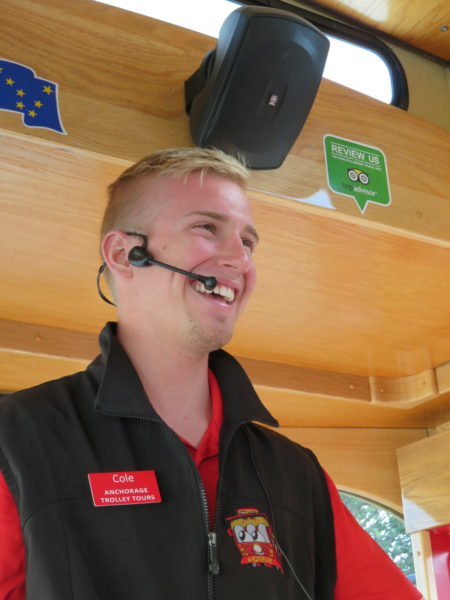
Cole was our trolley driver and narrator.
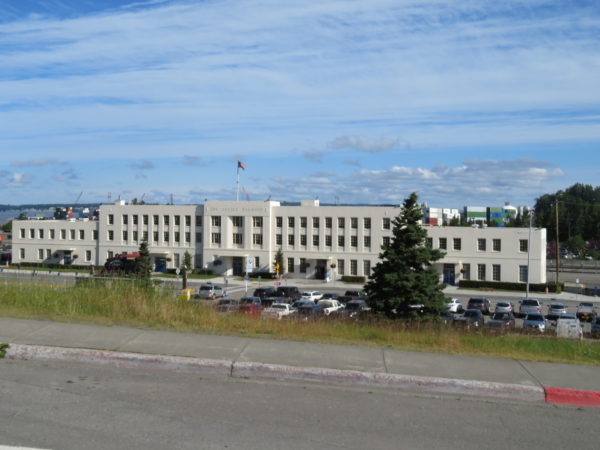
The Alaska Railroad Headquarters.
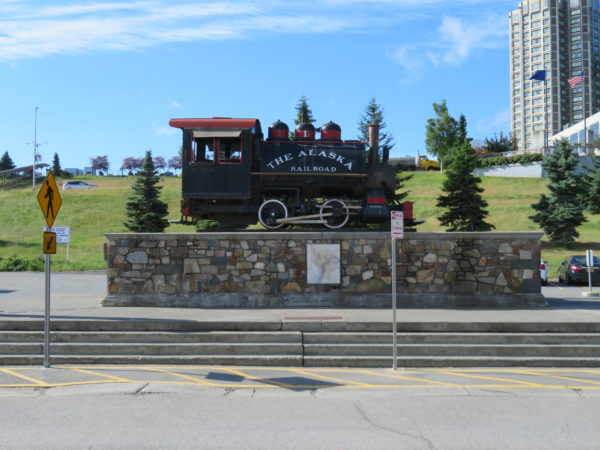
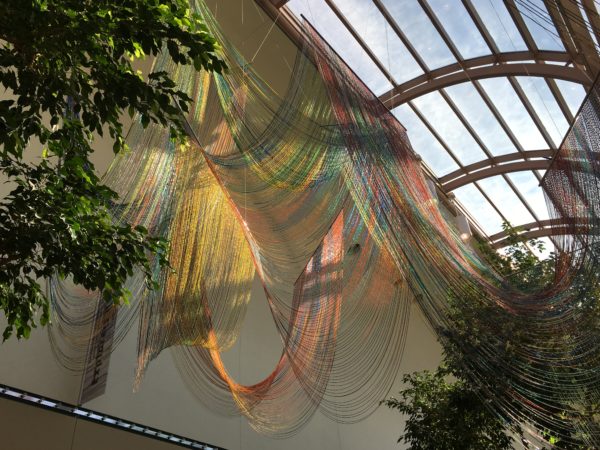
Jane was attracted to this string-art sculpture in the convention center.
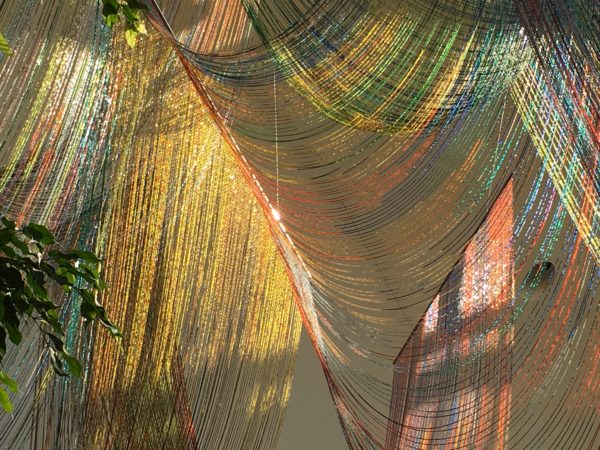
Lake Hood Seaplane Base
After our tour, we headed out to lunch at The Lakefront Restaurant at the Lake Hood Seaplane Base. Over 1000 float and wheeled aircraft are based here and there is a 10-year wait list for floatplane slips. We loved watching the planes take off and land while we had a nice lunch.
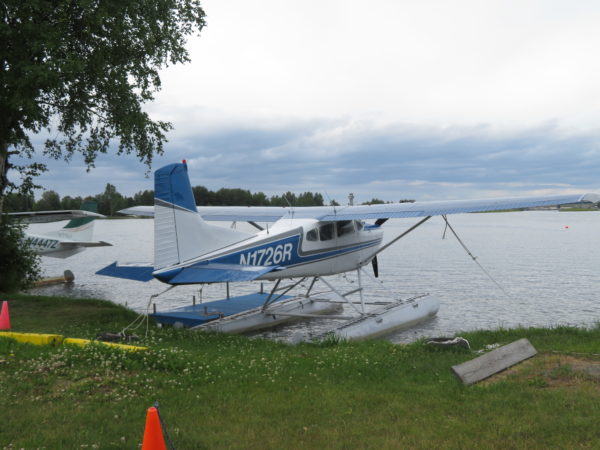
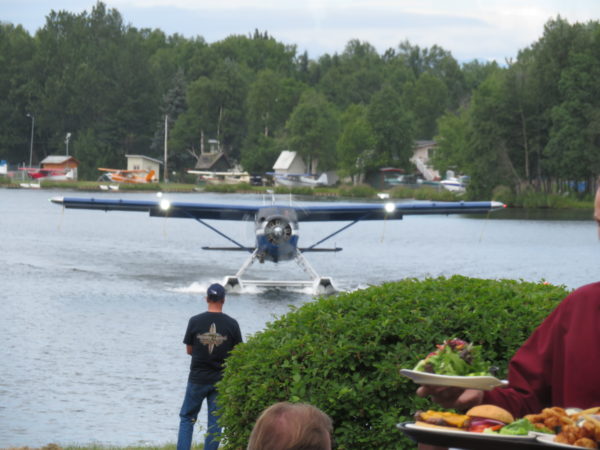
Coming in for lunch at the restaurant.
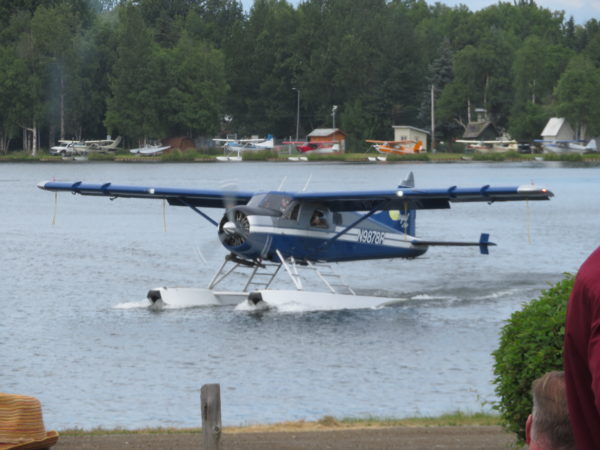
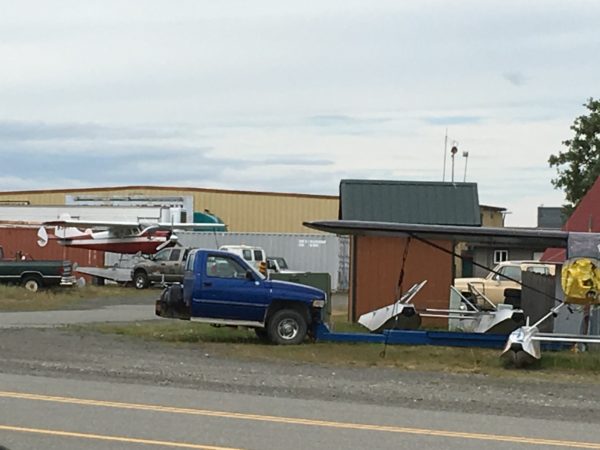
Where is the back half of the truck? The trolley driver quipped if anyone was looking for a truck, he’d heard that this one was half-off.
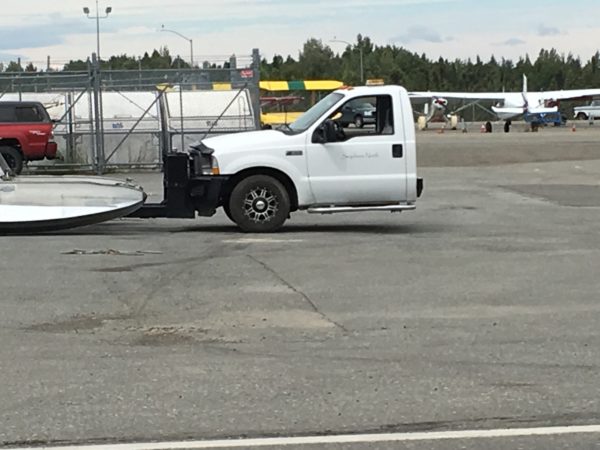
The fork-lift like structure on these front wheel drive trucks is used to transport the float planes on land should they need to go to a hanger for maintenance or storage. Having only 2 steering wheels makes them very maneuverable.
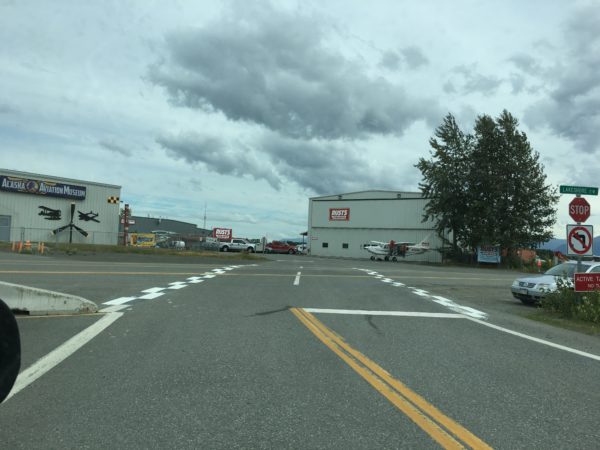
As we explored the Seaplane base we noted unusual markings on the street.
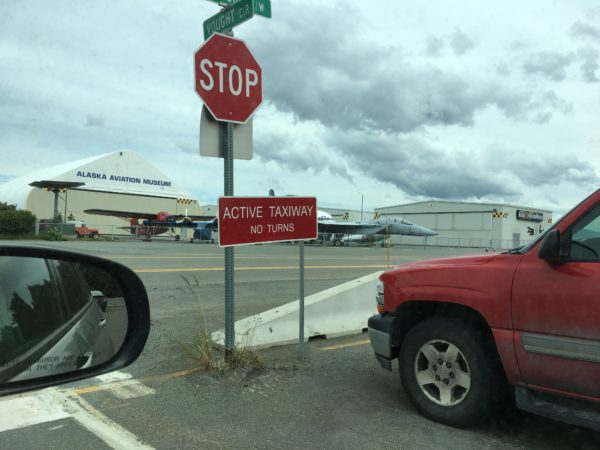
We discovered that some of the roads at the base are shared by vehicles and planes,
Earthquake Park
After lunch, we drove out to Earthquake Park. On Good Friday, March 27, 1964, one of the most devastating earthquakes to hit North America struck Alaska. Measuring 9.2 on the Richter Scale, the earthquake was centered 80 miles east of Anchorage. 100,000 square miles of the earth’s surface was vertically and horizontally displaced. The earthquake lasted over 4 minutes, shaking and demolishing much of the developed part of Alaska.
Earthquake Park is at the site of the Turnagain Heights Slide, the largest and most destructive landslide in Anchorage. Ninety seconds into the Good Friday Earthquake, a strip of bluff 8,000 feet long and 1,200 feet wide began cracking apart into large blocks which slid toward the Cook Inlet. The slide transported some homes 500 feet seaward and broke apart or crushed other homes. The slide movement continued for 90 seconds after the earthquake stopped. Over 12 million cubic yards of earth slid toward the inlet, 75 homes were destroyed, and four people perished.
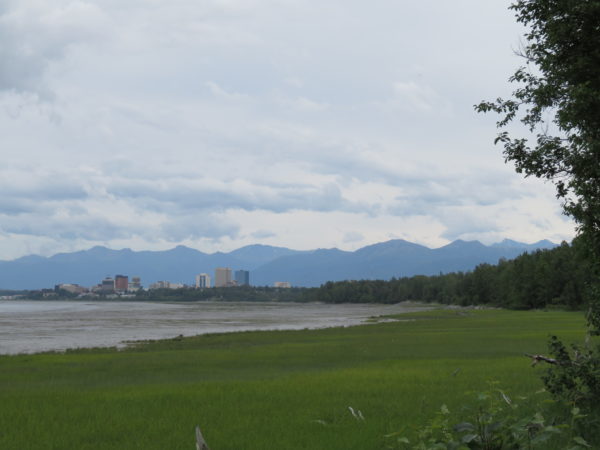
Anchorage today as viewed from Earthquake Park.
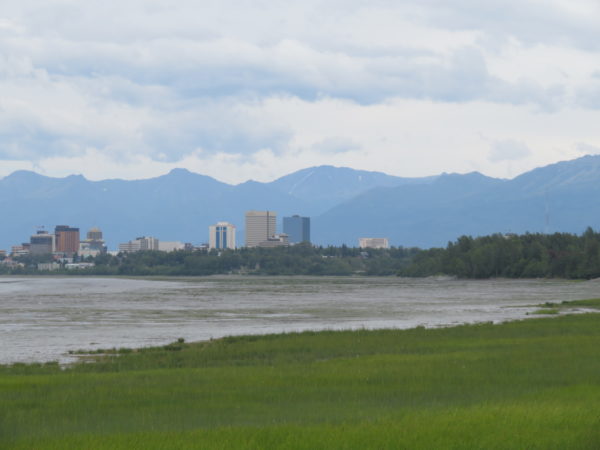
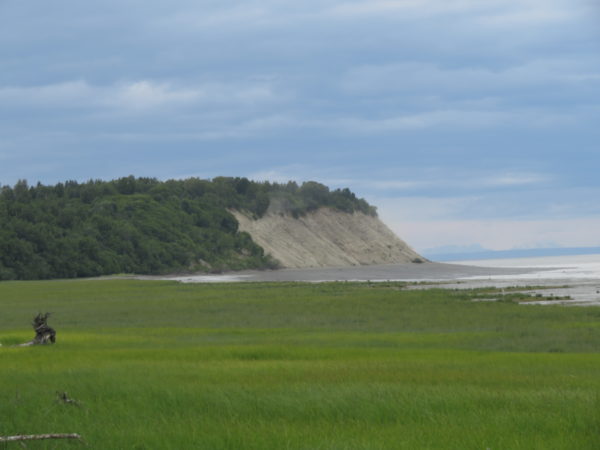
Turnagain Bluff.
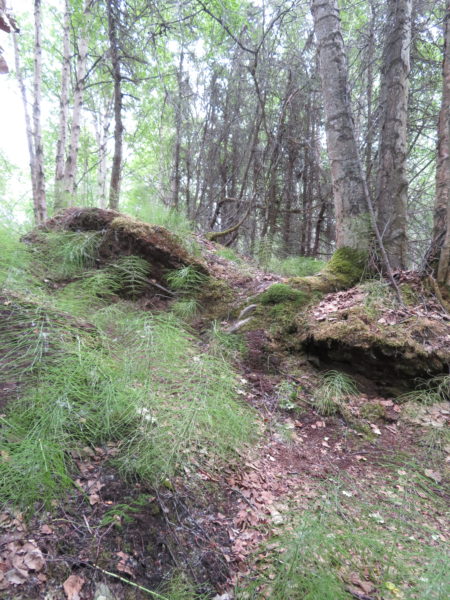
Displaced blocks of earth at Earthquake Park.
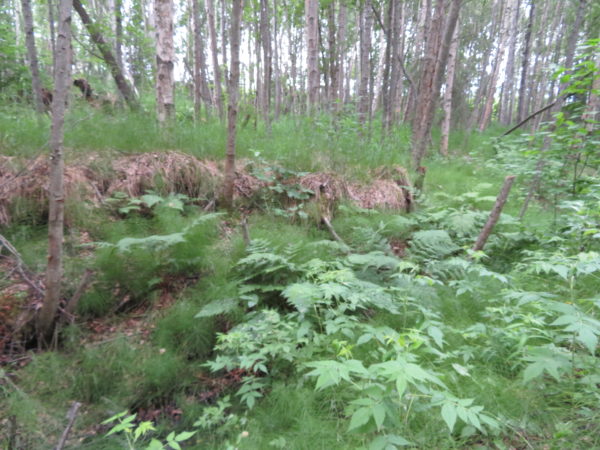
The Good Friday Earthquake was the most powerful earthquake recorded in North American history, and the second most powerful earthquake recorded in world history. Land near Kodiak was permanently raised by 30 feet and land southeast of Anchorage dropped by 8 feet requiring reconstruction and fill to raise the Seward Highway above the new high tide mark.
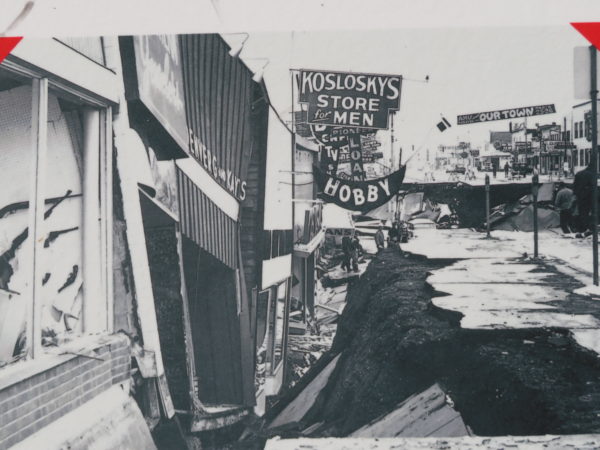
Landslides in Anchorage devastated the city.
The Alaska Native Heritage Center
The Alaska Native Heritage Center allowed us to experience the traditions of Alaska Native life–both past and present. Six life-sized traditional Native dwellings representing 11 major cultural groups transported us back in time. Each site had a cultural host who shared the stories of his or her people, their relationship to the land, and how they adapted and thrived over the centuries. The hosts were both very knowledgeable and generous with sharing their lives. After touring the village sites we returned to the main building which housed a theater, a Hall of Cultures which contained Artist studios and cultural collections, and the Gathering Place which was an open auditorium where dancing, Native games demonstrations, and storytelling took place, as well as short presentations introducing the five major cultural groups of Alaska.
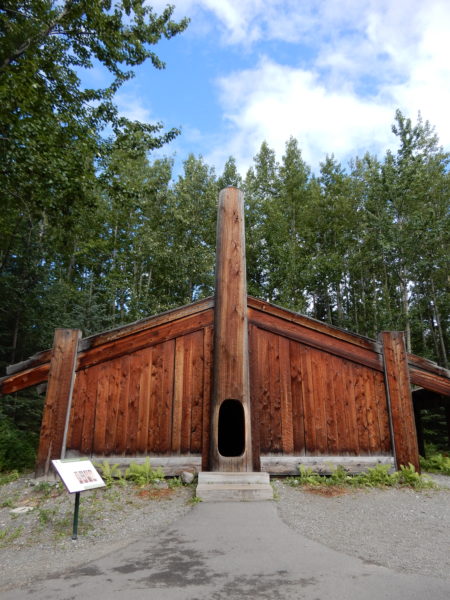
Tsimshian Village site, representing the Eyak, Tlingit and Haida peoples of Southeast Alaska.
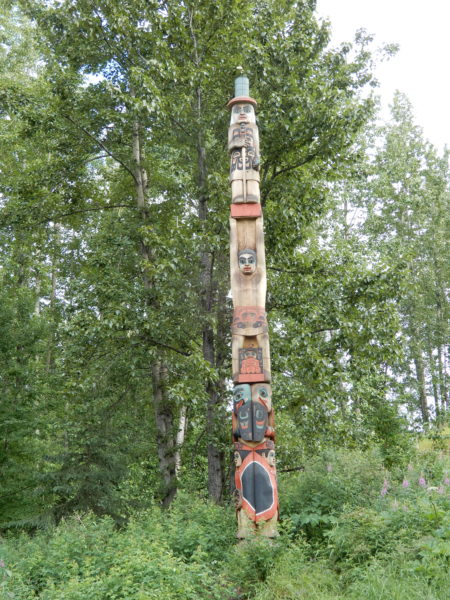
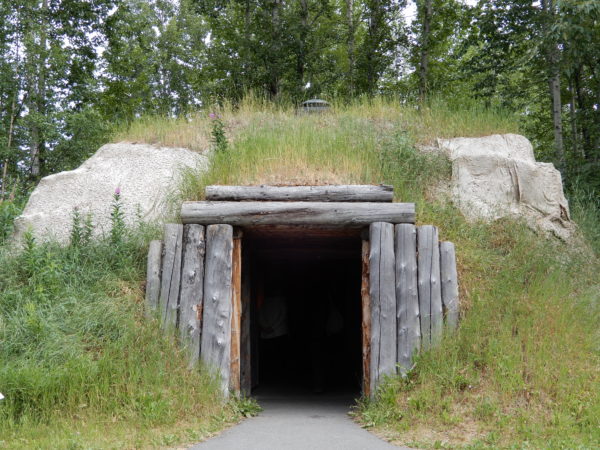
Alutiiq(Sugpiaq) Village site.
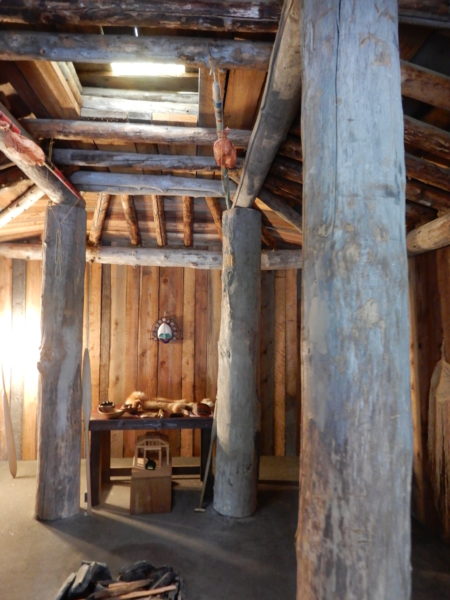
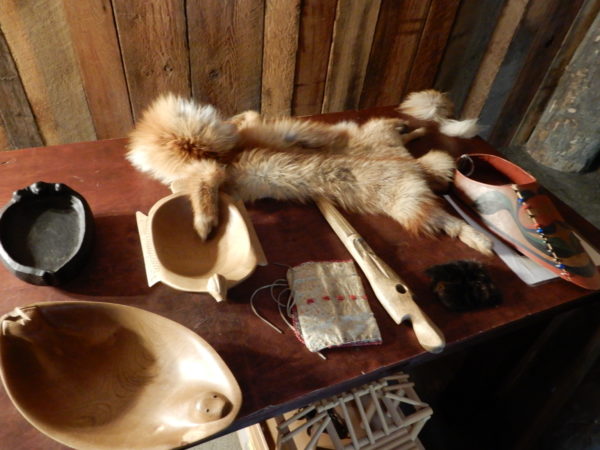
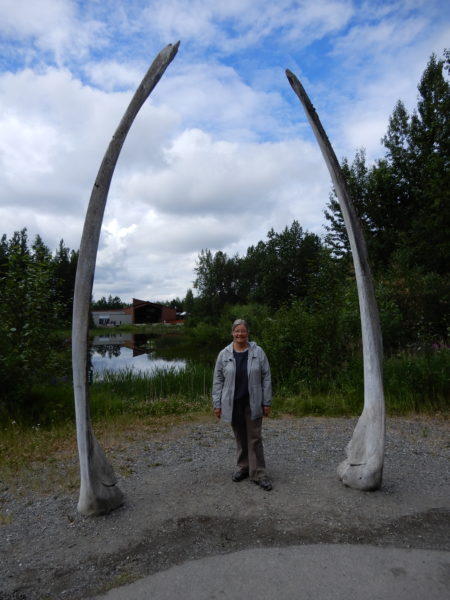
Jane is standing between the jaw bone a baleen whale.
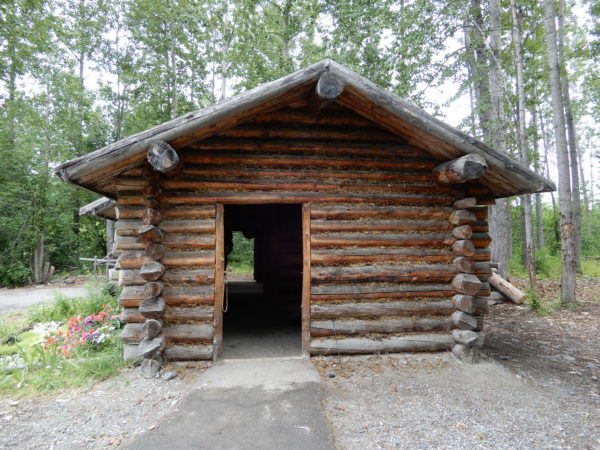
Athabascan village site.
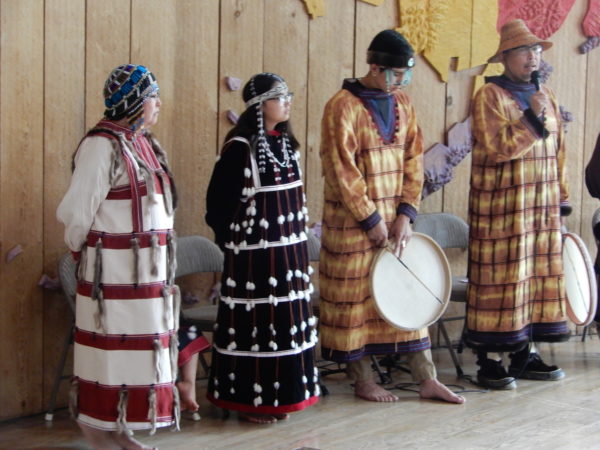
A Native dance troop representing the people of southeast Alaska.
Chugiak Cafe
We were looking for a place to eat lunch and were happy to find a review of a good-sounding restaurant with gluten-free baked goods. The restaurant roasted its own coffee and we can tell you the decaf was as good as the gluten-free baked goods. Neither existed but we enjoyed our lunch in this charming and colorful place.
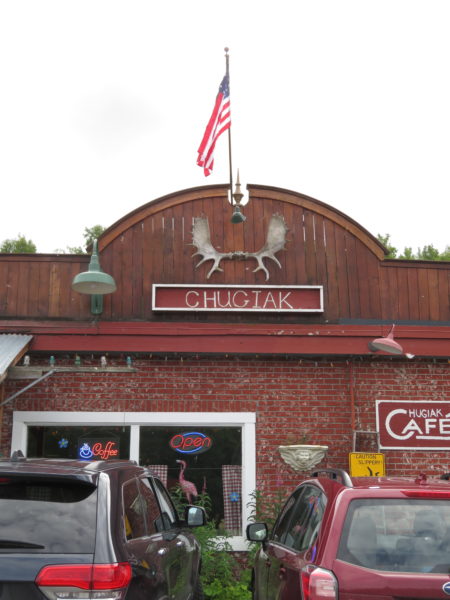
The Chugiak cafe.
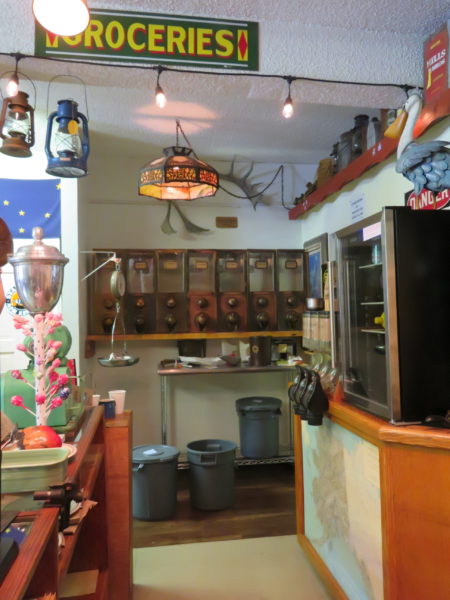
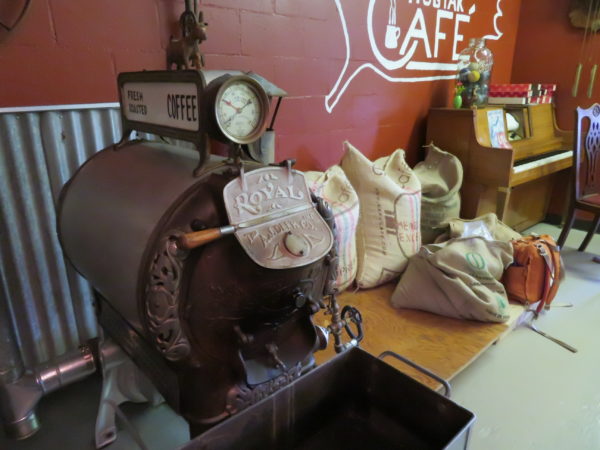
The Antique roaster and sacks of beans waiting to be roasted.
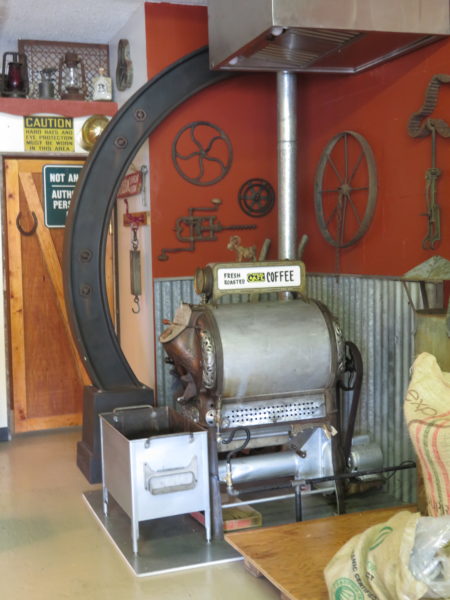
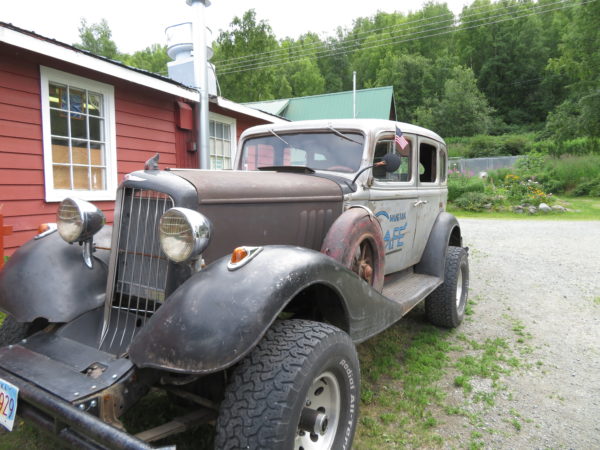
The Cafe owner’s car.
Eklutna and Thunderbird Falls
We visited the Eklutna Historical Park and Thunderbird Falls not too far from Chugiak.
The Dena’ina Athabascan village of Eklutna is 24 miles northeast of Anchorage and is the last of eight villages that existed before the Alaska Railroad brought an influx of colonists around 1915. First settled more than 800 years ago, it is the oldest inhabited location in the Anchorage area. Russian Orthodox missionaries arrived in the 1840’s.
Spirit houses are an example of the melding of Orthodox Christianity and native practices which can be seen at the Eklutna Cemetery, in use since 1650 and now a historical park. The cemetery is probably the most photographed cemetery in Alaska, overshadowing other features in the village.
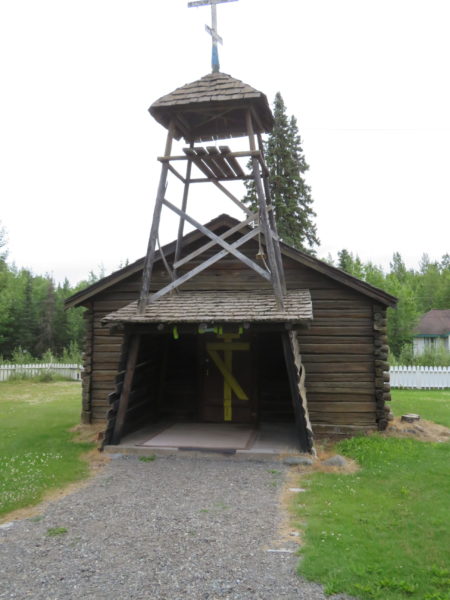
The original St. Nicholas Russian Orthodox Church.
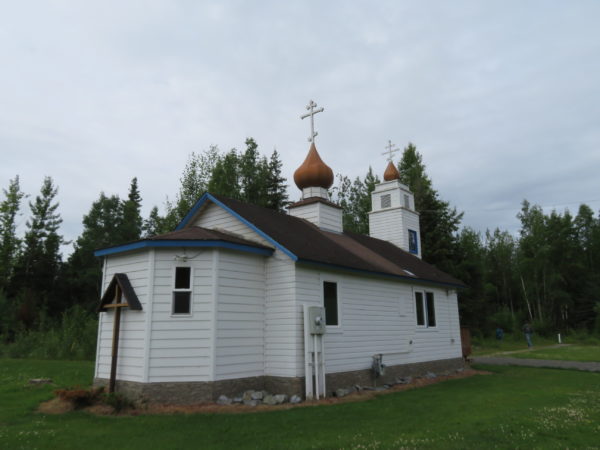
Current St. Nicholas Russian Church.
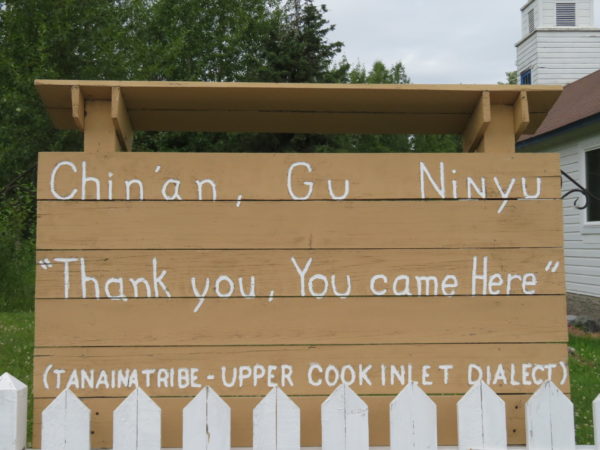
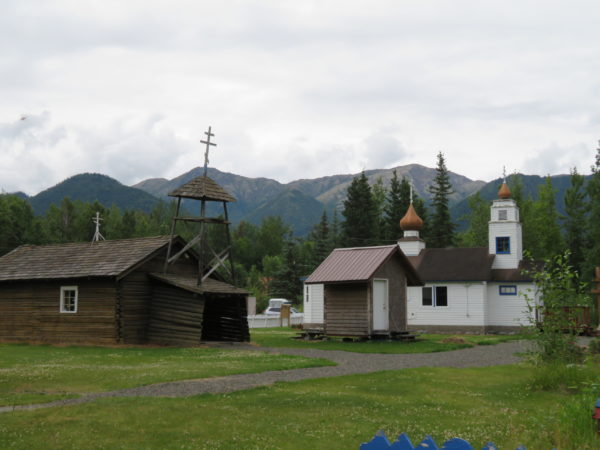
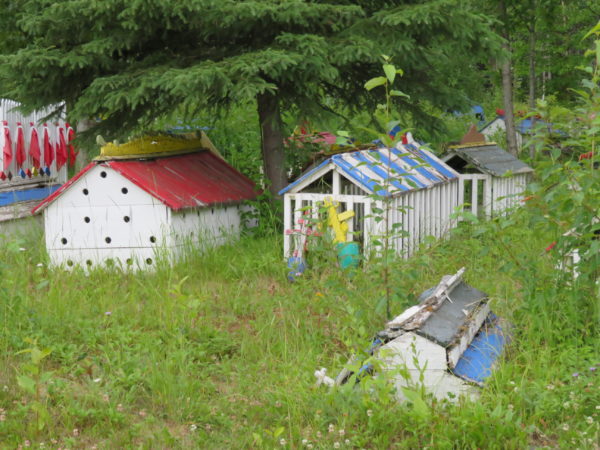
Eklutna “Spirit House” graveyard.
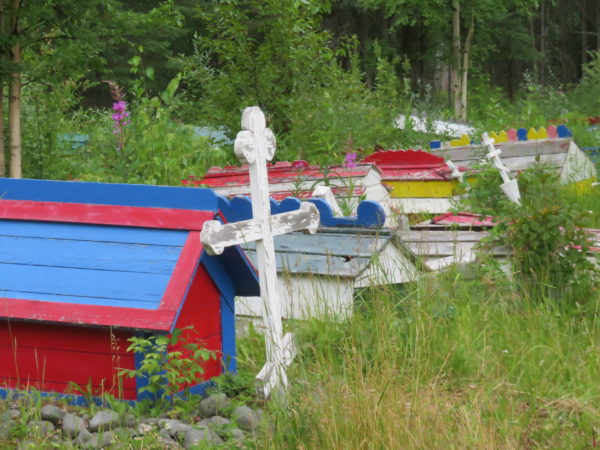
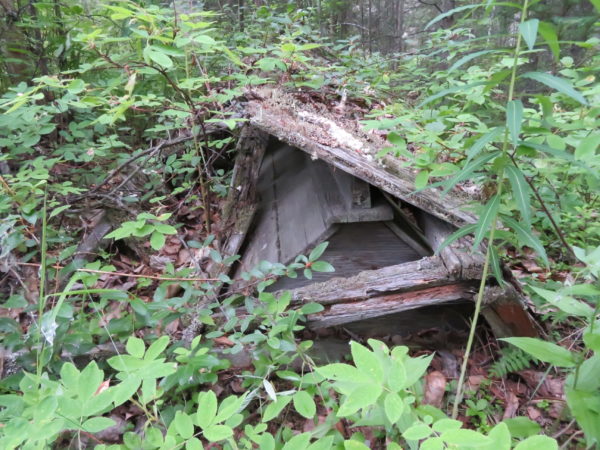
The oldest Spirit Houses are returning to the forest. We were sad that these houses weren’t being maintained until we learned they are not intended to remain as memorials. What is taken from the earth must be allowed to return.
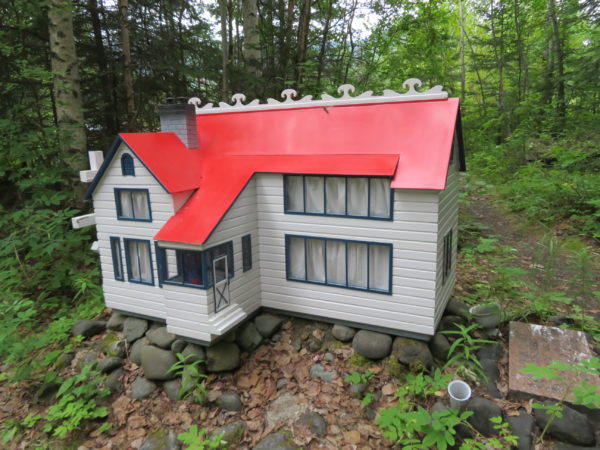
The newest and fanciest Spirit House.
Thunderbird Falls is located inside Chugiak State Park north of the Eagle River and just south of Eklutna. The Trail is a moderate 1-mile hike through a pretty birch forest along the Eklutna River canyon to reach a deck with views of a 200-foot waterfall.
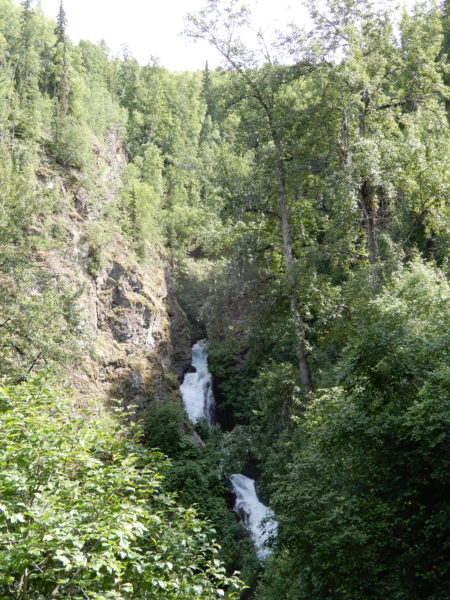
Thunderbird Falls.
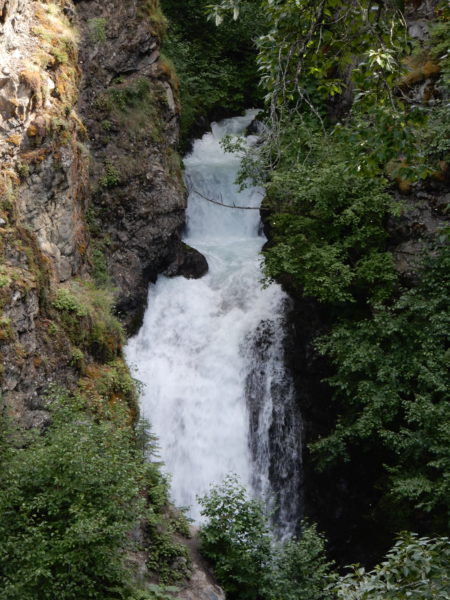
Upper falls.
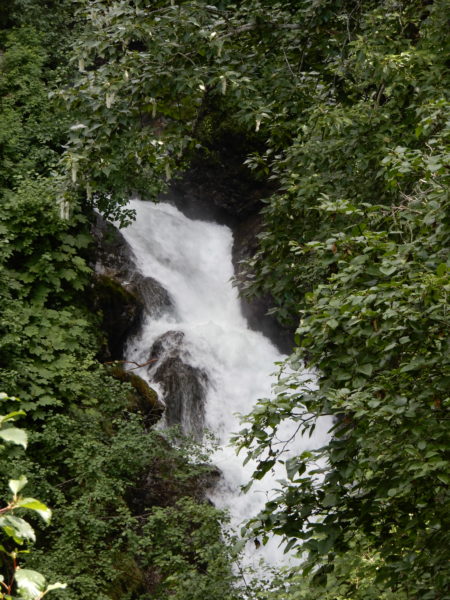
Lower falls.
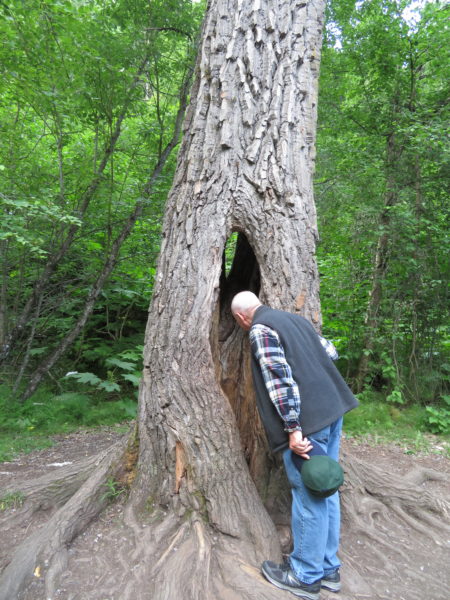
This would be a good place to hide a Geocache.
Last Day in Anchorage
The insurance company had arranged for the installation of a new windshield for the RV at a shop in Anchorage. They wanted to have the work done in Alaska rather than Canada and this was the first location that had a shop that could do the installation and where our schedule matched the time required to deliver the windshield from Indiana. We dropped the RV off and headed for the Anchorage Museum.
The Anchorage Museum is the state’s largest museum. Its four floors contain Arctic, Alaska and Northern Galleries of art and narratives, the Smithsonian Arctic Studies Center featuring hundreds of Alaska Native heritage objects, a Discovery Center, a planetarium, an auditorium, a restaurant and a gift shop.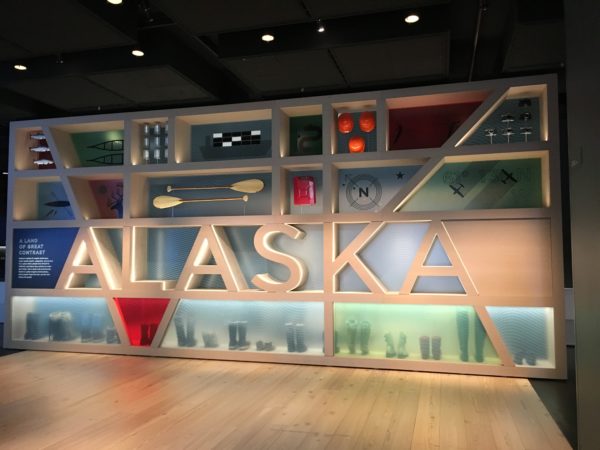 The Anchorage Museum.
The Anchorage Museum.
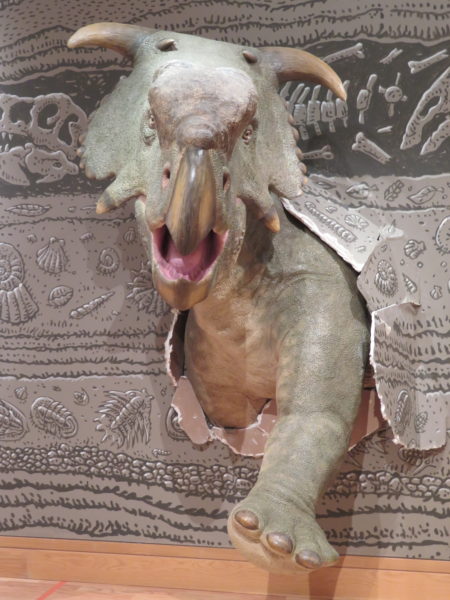
A whimsical dinosaur is breaking through the walls in the “Crusin’ The Fossil Coastline” exhibit. It was created by the gentlemen featured in the next two photos.
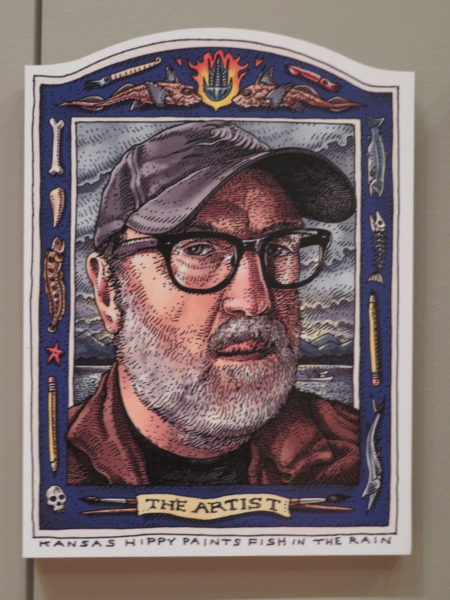
Alaskan artist Ray Troll.
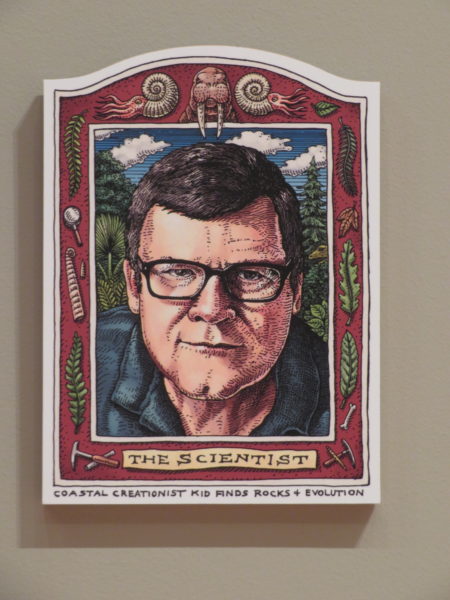
Paleontologist Dr, Kirk Johnson.
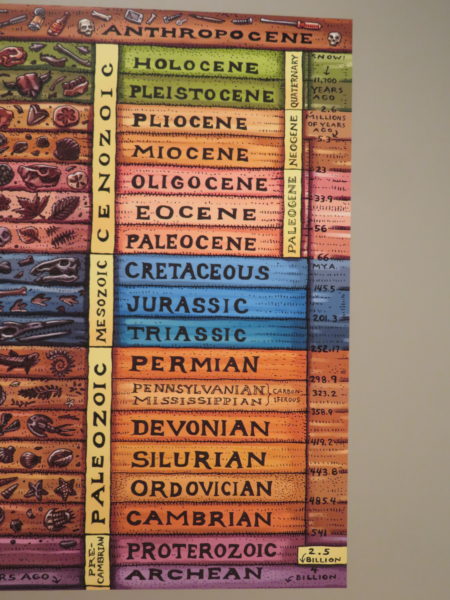
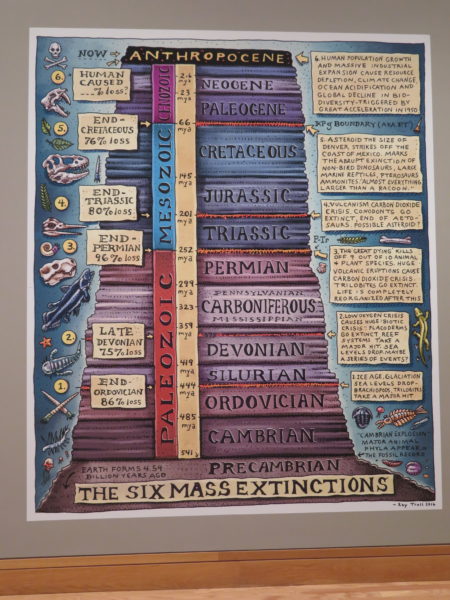
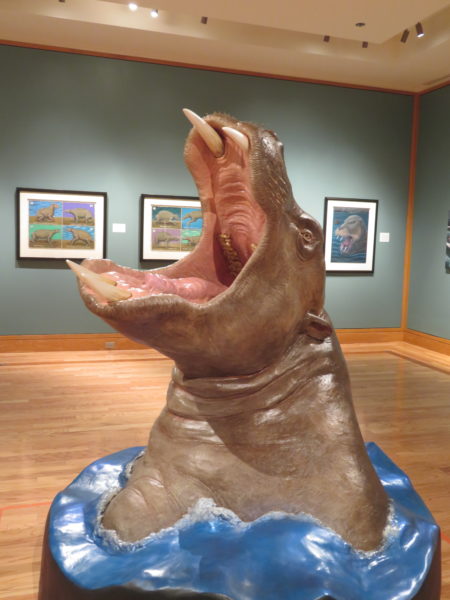
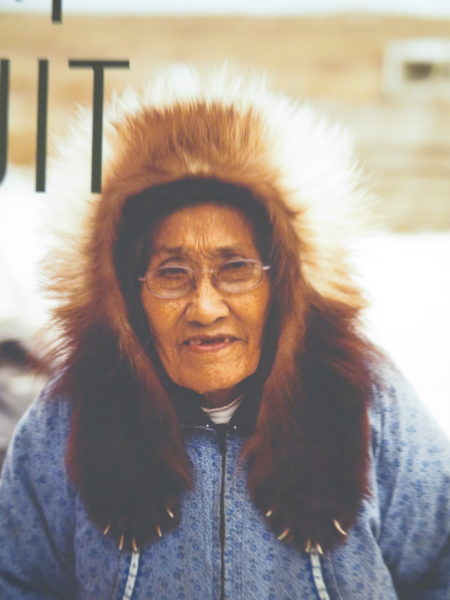
Mildred Black attended school for one day. She tells her story in the photo below.
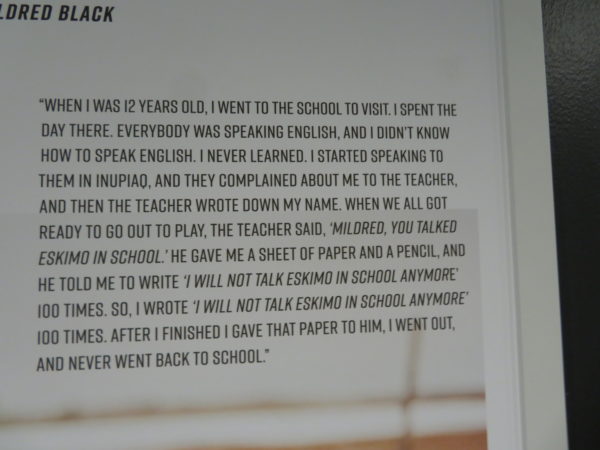
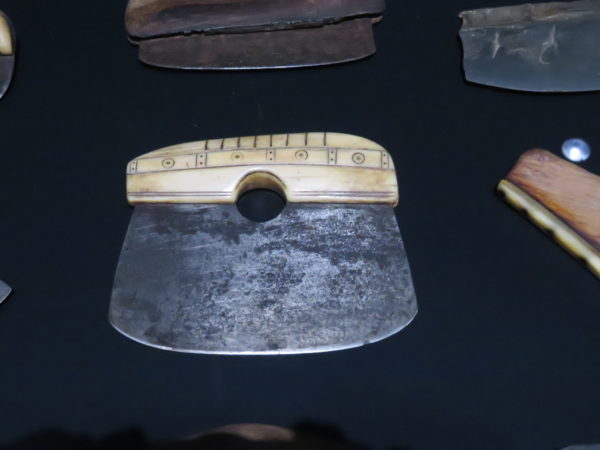
Antique ulus.
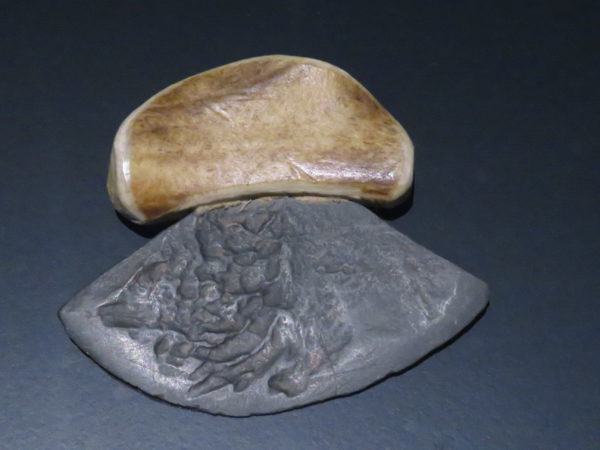
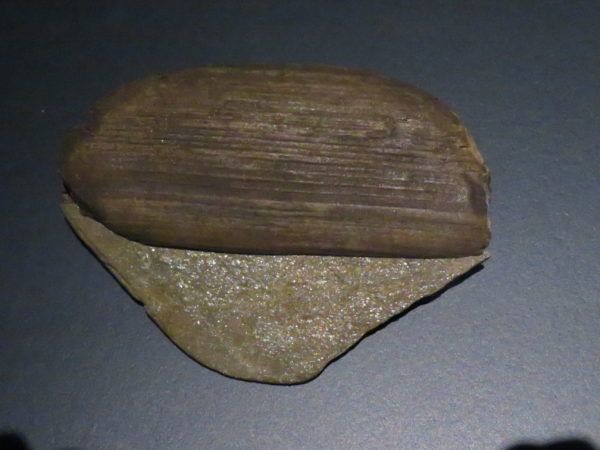
We collected the RV with its new windshield and decided the glass shop doesn’t get that many RVs. The approach to the shop was so steep that the RV gouged a trench several inches deep into the street–and we still have the asphalt in the hollow part of the trailer hitch to prove it.
Later we joined Dave’s cousin Skip, a long time Alaska resident, and his wife Renata for dinner. Dave and Skip had a wonderful time sharing the events that happened in their lives since they last met many decades ago. When we visited Dave’s aunt Judy in Missouri last June, she asked Dave to take Skip a painting of the northern lights that Skip’s father had made. We were happy to make that delivery at last. Dave and Skip are hoping they won’t wait so long for their next visit now that they have reconnected.
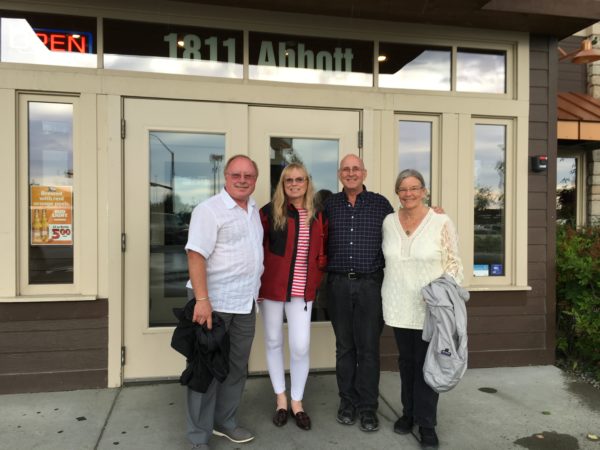
Dave’s cousin Skip, Skip’s wife Renata, Dave and Jane
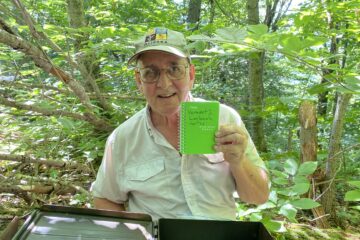
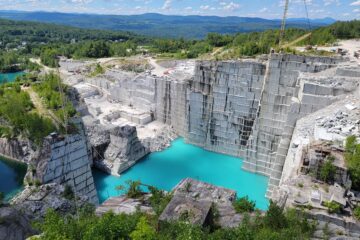
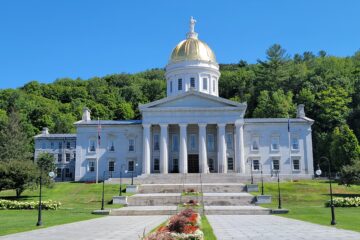
3 Comments
Madhuri Land · September 3, 2018 at 4:02 pm
I loved the string sculpture too!
And, the beautiful waterfall pictures.
I’m glad you got your new windshield. Sounds like it could have been a problem if you couldn’t get to the shop.
Susan · September 10, 2018 at 9:31 am
I am glad you got to see Skip. When you get time let me know what you learned about all the cousins
Laura · September 15, 2018 at 6:40 am
String art…yes!